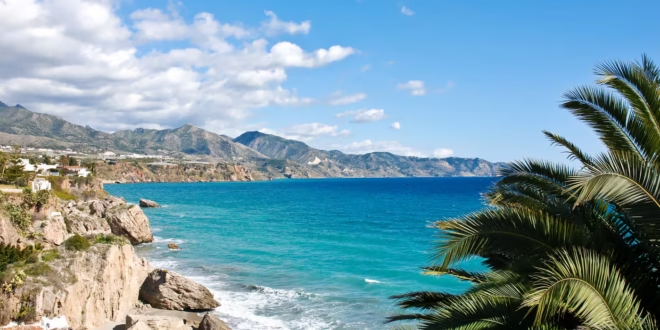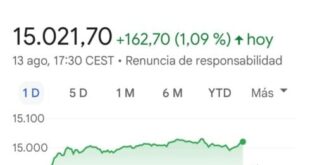Nobody can agree on exact figures for growth in prices and sales of Spanish housing, but all agree that it will be strong. This is true for Spain in general and the Costa del Sol specifically.
A good example is an article on El Economista At the end of November, it was noted that “experts estimate that prices will increase between 4% and 10 percent.” Caixa Bank’s study in Catalonia came out on the conservative side, whereas the more optimistic estimate was from A study Forcadell & the University of Barcelona
According to the latter study, the number of home sales has reached levels last seen at the height of the boom during the 2000s before the 2008 economic crisis.
Those numbers are averages for the whole of Spain, and sales and price increases vary widely across the country. In Malaga province, for instance, there was an estimated rise in prices between 2023-24 of 13.9%.
Spain’s overall price rise was 10.7%, according to Idealista.com. Malaga’s price increase was significantly higher than the national average.
Unless there are any major shocks, we can expect another good year on the Costa del Sol. This is due to a number of factors.
The first thing is to understand that the economy Spain is one of Europe’s strongest economies, with a growth rate of over 2,8-3 % in 2024. Germany, on the other hand, is experiencing a recession. Next year predictions It is expected to grow by 2,3% compared with 1,3% for the EU.
Housing Supply
Second, the Spanish housing sector continues to be unable to provide enough housing to accommodate the growth in new households. According to a second Caixa Bank report, this deficit in home ownership is a long-term problem. construction About 40,000 are killed each year.
The lack of housing supply is driving the prices up for both new and used homes. This is important because, compared to 2007, the increase in home prices was not caused by a speculative boom. El Pais notes.
While less explosive than a bubble, supply problems are longer-lasting. “The solution is more complicated: I see it as more complicated to affect the market on the supply side and the production of housing than on the financial side,” according to professor José García Montalvo.
Using tight monetary policies, it took only two years to solve the inflation problem post-Covid. More than one measure is needed to build 40,000+ additional houses each year. The result is that house prices, including those on rental properties, will continue to rise above inflation.
This is particularly true along the Costa del Sol where demand is higher than the interior. That, for instance, is why house prices in Malaga province have surged more than anywhere else in Spain.
New Planning Laws
But there is also hope in this regard. In 2021, Junta de Andalucia approved LISTA – a new planing regime. It seems that this has opened up the possibility of reforms on the local level. Or at the very least, this has contributed to a change in thinking about policy urgency.
Marbella will soon – after a decade in limbo – have a new overall planning law (POU). The detailed zone-by-zone law (PGOU) will follow later this year, or in early 2026.
Other Costa del Sol municipalities are already feeling the effects of this change. Vélez-MálagaApprove the construction of 3500 homes. This is the beginning of a total of 25,000 new houses, including at least 10% affordable housing.
The November Study by Caixa BankAlso, it was suggested that the gap between the number of new households and the new constructions at national level is narrowing. The former has been declining while the latter is increasing. The gap is still there, but this is a good sign.
Why is it important for homeowners to know? It’s better for your equity to rise quickly than to see prices fall rapidly.
Perhaps in the near future. At some point it does not matter whether there is a bubble in the short term or not, if homes are priced out of reach for buyers. This means you cannot actualize your equity. A balance must be reached.
On a political scale, if the price of houses continues to rise faster than inflation, then it will lead to political instability. Spain has seen some of the biggest demonstrations about housing affordability since the Indignados 2011 protests. The changes that are coming will hopefully help ease this pressure in the next few years.
Recent announcements have also been made in the luxury housing sector. Rafael Nadal’sFirm announces 100 new homes while the purchase is underway. La Zagaletain Benahavís is also going to accelerate the development of several hundred luxury homes.
This will enhance the Costa del Sol’s image as a destination of luxury, which will boost the local market. It will also provide tens and thousands of new jobs.
Other changes that may affect the housing industry are expected to occur this year.
The interest rate will decrease at the EU-level, but it will also filter down to Spain. The inflation has been defeated, but some countries like Germany are still facing economic difficulties that require stimulus.
It is a predicted Rates could drop to 2%. peak 4.5% by May 2024. Low interest rate and general credit easing will increase sales and boost prices.
Tourist Rental Market
There are also downside pressures which could slow down the market. Many people have talked about housing affordability and housing rights. Much of this has been about Airbnb holiday lets and luxurious housing. Many cities, such as Málaga, have frozen new licenses in areas where tourist rentals make up more than 10% of the housing stock. There are also other local regulations in the works.
In mid-January, Prime Minister Pedro Sanchez announced a 12-point plan to take on the affordable housing crisis in Spain. This plan likely won’t take effect until 2026 but if it passes – by no means certain – it will add to the weight piling on holiday rentals.
Sanchez’s plan includes imposing taxes on Airbnb rentals, similar to those that are imposed on hotels. The local authorities will have more money available to hire additional inspectors in order to crackdown on illegal holiday rentals.
The move comes after many resident associations have banned Airbnbs from their laws. Foreign buyers from the UK, for example, often rent out their holiday homes when they’re not in Spain. This could affect sales and therefore prices. Owners would be forced to pay for a mortgage year round and cover community expenses without occupancy to offset costs.
A large tax will be levied on nonresidents and non-EU citizens who purchase homes. This could dampen the enthusiasm for the luxury market. It will impact Marbella, and other locations where foreign buyers are an important component of the market.
The Golden Visa Scheme is likely to be scrapped this spring. Therefore, this tax will have a double impact on this important market segment. The hope must be that the strong reputation, quality properties and extensive infrastructure and services – from golf to transport – will maintain the region’s momentum.
On the other hand, there will be tax incentives – basically a 100% tax holiday – on anyone who provides a long-term rental at an affordable rate. The region is growing, and with it, the construction workers, service providers, and new luxury developments. This could help ease the pressure on housing.
Costa del Sol faces some challenges but the overall picture is positive. The economic stability and strength will continue. This is a mature region with excellent services, beautiful beaches, and a high-quality of life.
It is a great time to buy or sell, given all of the factors. The region is in for several years of good growth.
 Costa News Spain Breaking News | English News in Spain.
Costa News Spain Breaking News | English News in Spain.





